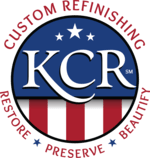When injuries occur on the job, the first aid kit becomes the most important toolbox at any facility. Even if designated personnel have completed first aid training, emergency medical supplies may not be readily available. In the event of an emergency medical situation caused by a serious injury accident, proper and prompt treatment can greatly reduce the severity of the injury and possibly prevent the death of a co-worker.
The suggested contents of a well-prepared first aid kit include:
- Handbook with illustrations for an important and quick reference guide
- PPE: 3-Pair latex gloves, surgical masks, dust masks, or other needed face protections such as clear eye protection or face shield
- 6 large and sterile gauze pads (sizes: 2X2’s, 3X3’s, and 4X4’s) and 3 compress dressings
- 3 rolled gauze bandages that are 2″ and 3″ wide and a large box of assorted bandages
- 2 elastic wrap bandages (ace wrap).
- Alcohol, peroxide, alcohol swabs, antiseptic spray and ointment, burn gel or cream, pain relief tabs, cotton balls and Q-tips
- 2 surgical or athletic tape rolls that are l” and 2″ wide
- Good quality eye-wash solution, with eye cup and liquid antiseptic hand soap
- Blunt-nose surgical scissors, tweezers, safety pins, and a snake-bite kit
Keep in a Specified Location at All Times
The first aid kit is useless if you can’t find it. Know the location of your first aid kit, and be familiar with its contents and how to use them.
Basic first aid rules:
- Do not move an injured person unless necessary to prevent further injury.
- Keep the accident victim warm and dry.
- Keep the injured person quiet and lying flat on his/her back.
- Check the victim’s airway, breathing, and circulation. Keep the victim’s head level with his/her body.
- Do not give liquids to a person that is not fully conscious.
- Remember to follow your emergency response plan.
- Send someone to call the paramedics or ambulance (before calling, have key details such as: type of injury, exact location of where the injury victim is, and if available, a contact number).
- Instruct the caller where to send the ambulance. Be clear, calm, and concise as to the location, and the best route to take.
- Send someone to meet and direct the ambulance so valuable time is not wasted.
- Stop heavy bleeding by applying pressure with a large compress bandage and keep the injured arm or leg elevated.
- Follow procedures for blood-borne pathogen safety.
- If the victim is not breathing, begin CPR if properly trained.
- Never exceed your level of first aid training!
Also remember to always notify management whenever the first aid kit is accessed, or whenever first aid is administered so adjustments to the facility’s first aid kit can be made. For more information, contact KC Restoration today!

